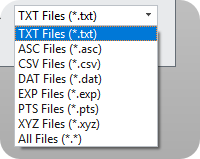Here are some files. I will send the .igs file. I sent the .u file by mistake.
I will write up a description later.
thanks
Stuart
Here are some files. I will send the .igs file. I sent the .u file by mistake.
I will write up a description later.
thanks
Stuart
ZW3D help was involved with some of this project a while back. I was trying to animate.
This is a 360:1 speed reducer.
I want to automate this process to allow for rapid design iterations.
Using NCL to generate the points works just fine.
The generated points are the centerline of the motion of the two entities.
The final contour is the centerline curve offset by the radius of the rollers on the pins.
The .avi files don’t show the brass bushing on the pins.
I have 3D printed plastic models.
I am in the process of making/having made a test model.
I will download the latest ZW3D and look at the macro capabilities.
thanks
Stuart
HI
1.If you just get the motion trajectory, you can upgrade to a new version, which outputs curves again.
2.I’ve seen your *. u file, it’s binary, if the point coordinates export is

These formats are great!
Hi,
The .u file is a Unicad database file. It is the format NCL uses at their database. NCLIGES imports the .u file and exports a .igs file. The .igs file is the iges representation of the .u file. If you have the .igs file you do not need the .u file. I sent the .u file by mistake.
The link for the .igs file was sent in the next message.
thanks
Stuart
In this file
ZW3DExample2.Z3 (215.7 KB)
I want to use the variable PatternRadius to give the X value of Point1.
I want to loop(macro?) create Move(1-29) using a variable to exit the loop.
I want to create a curve using the points moved by the loop.
thanks
Stuart
In this paper,we study the relationship between the mechanism and the relationship between the mechanism.
I don’t see a paper.
Did you send an attachment or a link?
I didn’t write macros. I read your files.
I haven’t had time to study him lately.
I’m no help with the code but it seems to me that the source of the data is important.
The original curve to point macro we used relied on the points being imported into ZW in the correct order so the macro could select them correctly.
I am not sure the IGES intermediary will keep that order.
If your NCL data does not follow the correct order the problem persists.
The Excel data we generated was correct order for each curve and each curve delineated from each other curve in the correct format.
If you do not follow this pattern, I suspect manual selection is required which is a terrible job.
I hope this helps you in some way.
Cheers - Paul
Hello Stustev
Not to step on any toes but I am using Rhino with Grasshopper for such tasks.
Its super easy and intuitive.
In ZW you have to write your own plugin for doing a design like that.
Cheers
John,
I don’t feel any pain in my toes. ![]()
To get where I am I use a macro in NCL to create the points. I then iges export the points and then use ZW3D to create the curves and the rest of the solid model.
Using ZW3D I can create the points but it is (a pain) a lot of repetitive pointing and clicking.
Then, creating the curves in ZW3D is another pain of repetitive pointing and clicking.
I then use variables to allow me to iterate the design parameters.
I can use my process to get where I want to be. I just want to automate the process to eliminate (as much as possible) the human (error prone) factor. This would allow a faster and easier (pain free) design process.
I am able to use NCL curves but then I have to iges the curves in to ZW3D for every iteration to then be able to create the solid model.
I am not stuck in the water with a broken propeller. I can use NCL (an oar) to get there. Using ZW3D would allow the speed boat to enter the water, I think.
It just may work out using NCL is the preferred method. There may be some factors in ZW3D that don’t allow the automatic creation of the curves. I just don’t know. I want to know.
Over the years I have been able to use the combination of NCL and VX/ZW3D to do some amazing and impressive projects.
thank you very much for your attention and comments
Stuart